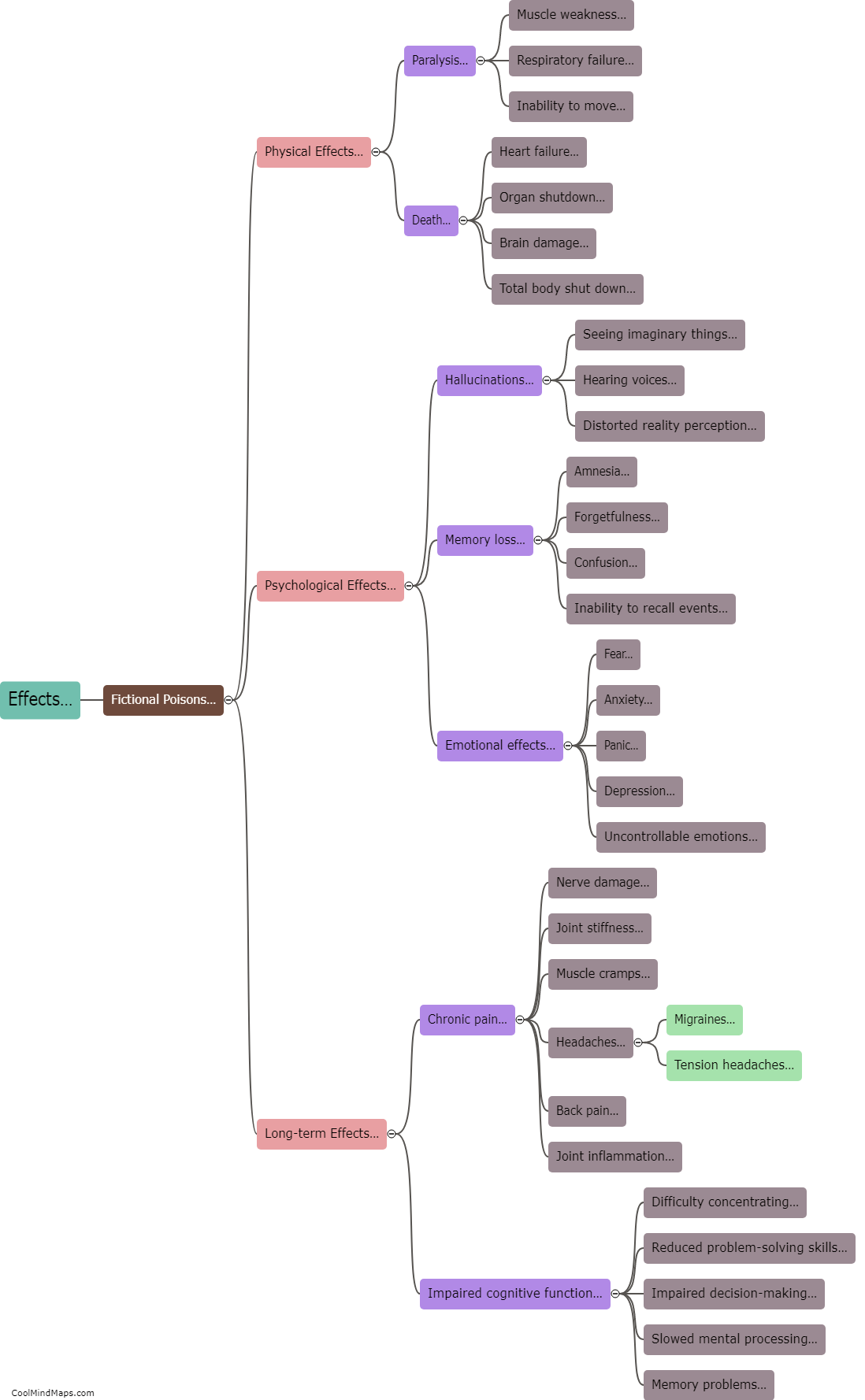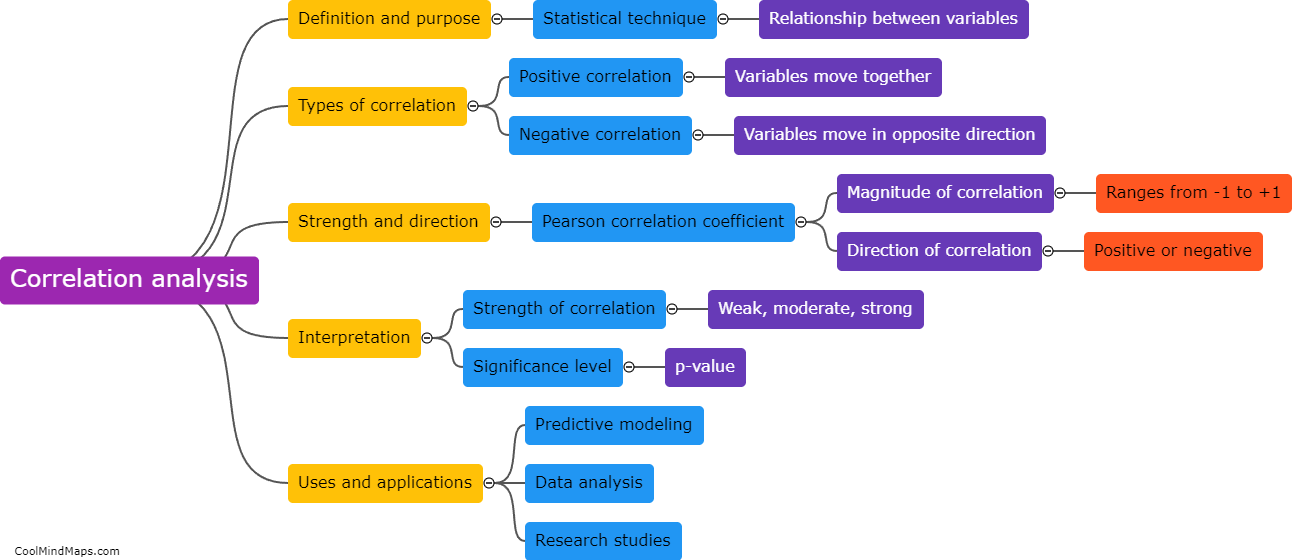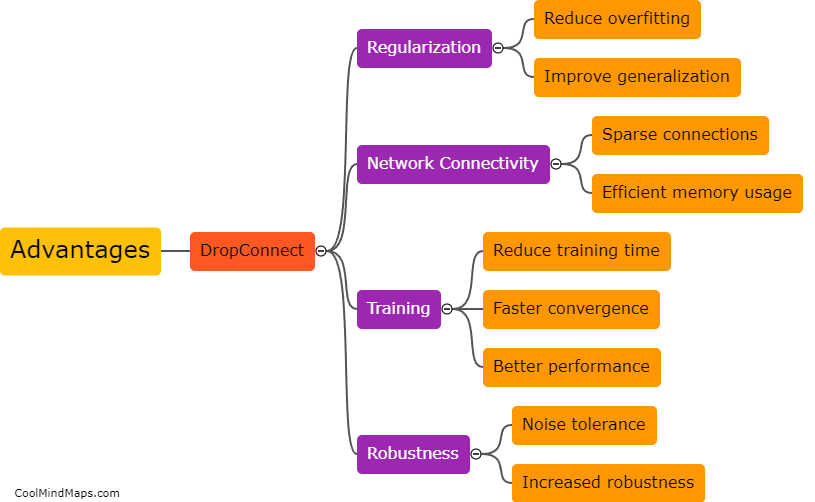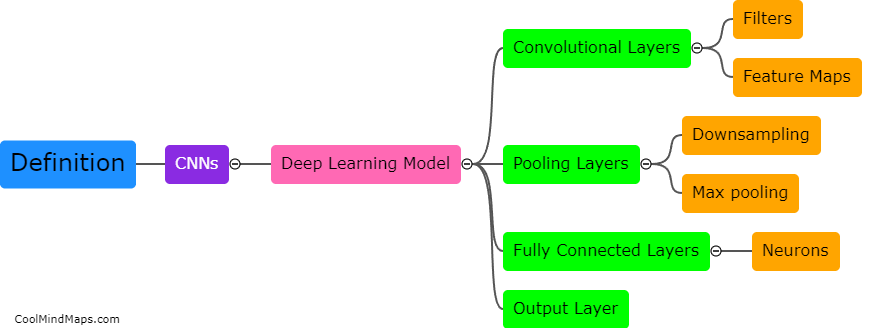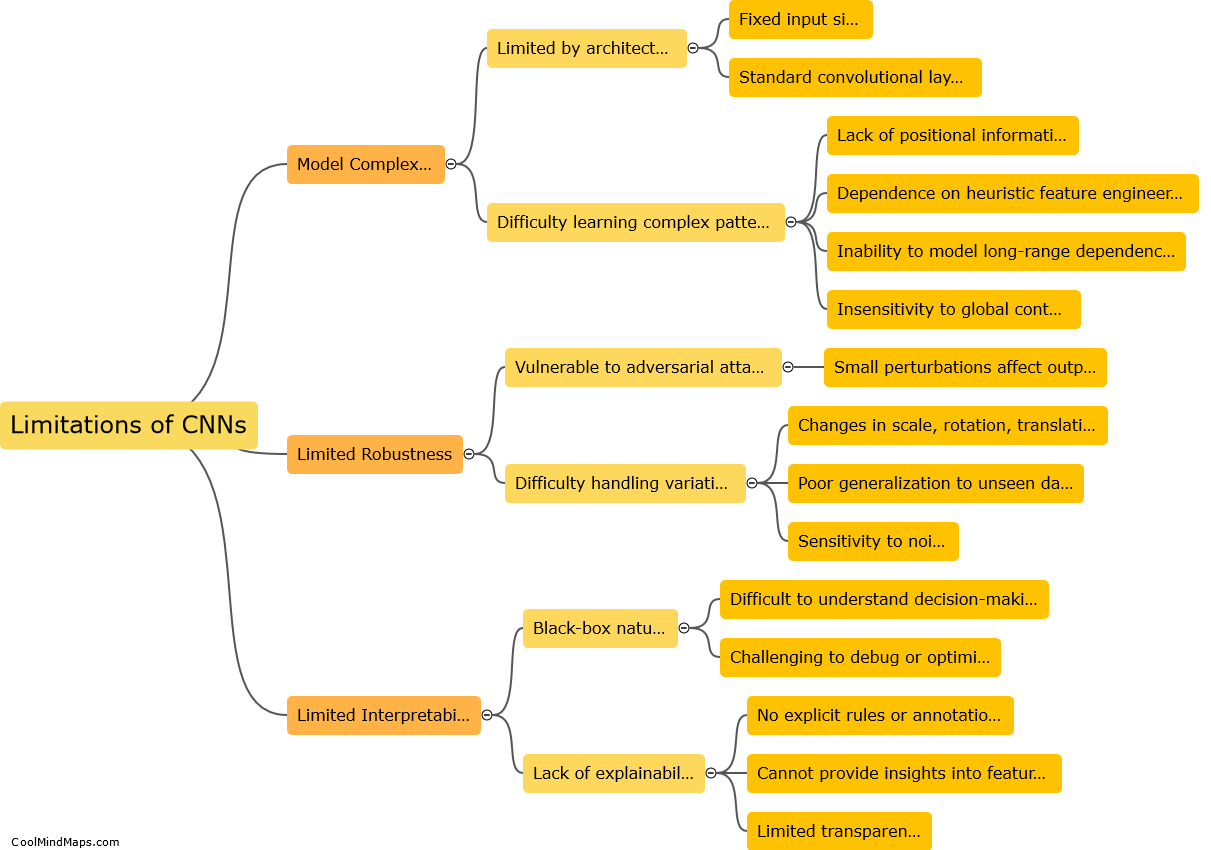How do CNNs work?
Convolutional Neural Networks (CNNs) are a type of deep learning algorithm specifically designed for image recognition and computer vision tasks. CNNs work by utilizing numerous layers of interconnected nodes, where each node learns to detect specific features of an image. The network starts with convolutional layers, which apply filter operations to extract important visual patterns, such as edges or curves. These features are then fed into pooling layers, which reduce the spatial dimensions of the data while retaining the essential information. Finally, fully connected layers combine the learned features to classify the image into different categories. Through a process of training with labeled examples, CNNs adjust their weights and biases to optimize the accuracy of their predictions, enabling them to recognize and classify images with remarkable precision.
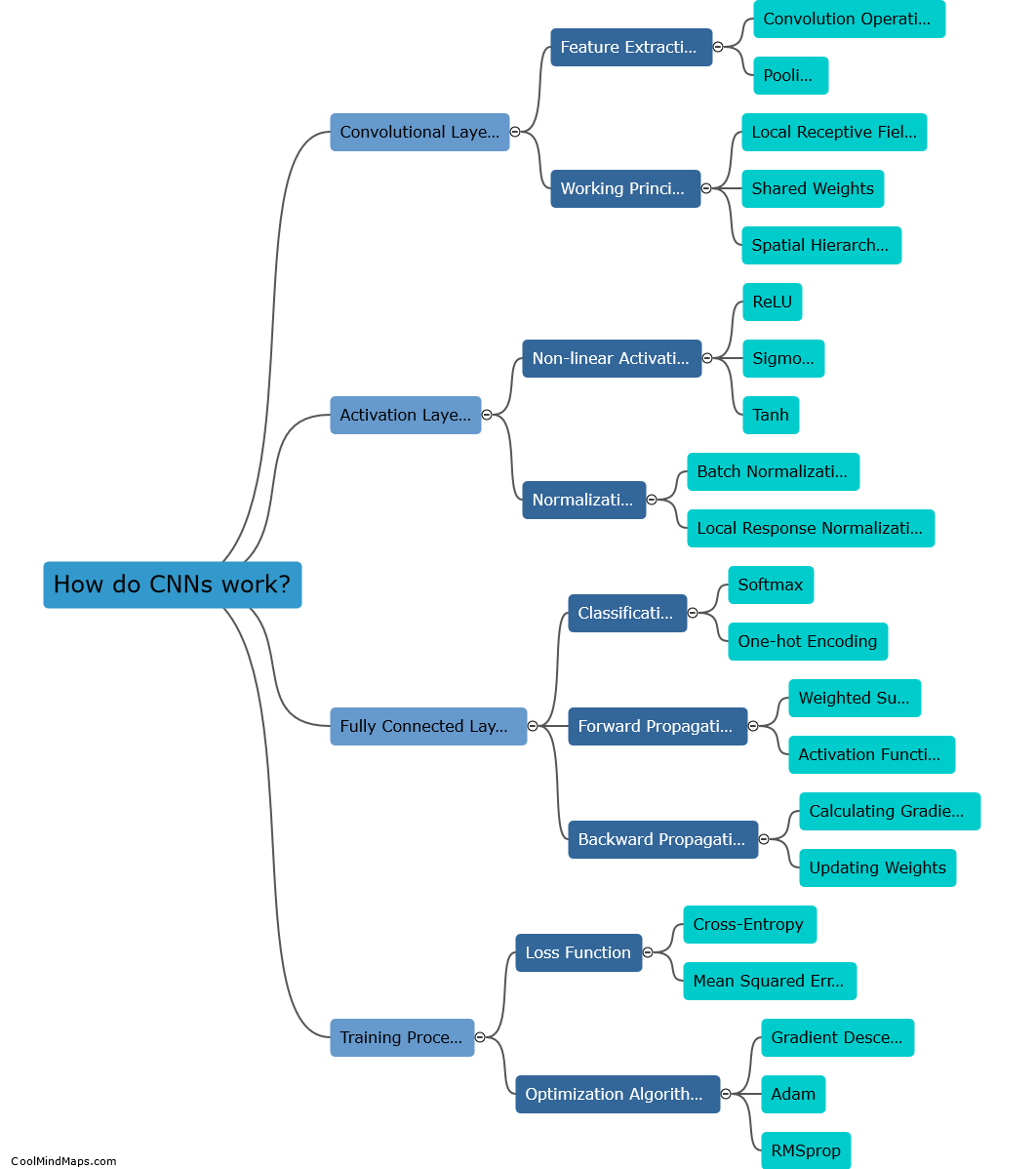
This mind map was published on 20 August 2023 and has been viewed 103 times.


